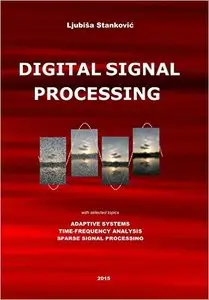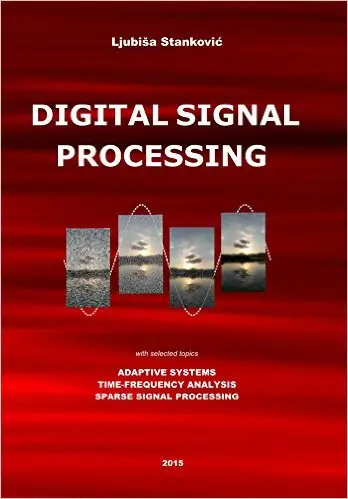Digital Signal Processing: with Selected Topics: Adaptive Systems, Time-Frequency Analysis, Sparse Signal Processing by Ljubisa Stankovic
English | Nov. 18, 2015 | ASIN: B018832YDG | 820 Pages | PDF | 16.34 MB
English | Nov. 18, 2015 | ASIN: B018832YDG | 820 Pages | PDF | 16.34 MB
This book is a result of author's thirty-three years of experience in teaching and research in signal processing. The book will guide you from a review of continuous-time signals and systems, through the world of digital signal processing, up to some of the most advanced theory and techniques in adaptive systems, time-frequency analysis, and sparse signal processing.
It provides simple examples and explanations for each, including the most complex transform, method, algorithm or approach presented in the book. The most sophisticated results in signal processing theory are illustrated on simple numerical examples.
The book is written for students learning digital signal processing and for engineers and researchers refreshing their knowledge in this area. The selected topics are intended for advanced courses and for preparing the reader to solve problems in some of the state of art areas in signal processing.
The book consists of three parts. After an introductory review part, the basic principles of digital signal processing are presented within Part two of the book. This part starts with Chapter two which deals with basic definitions, transforms, and properties of discrete-time signals. The sampling theorem, providing the essential relation between continuous-time and discrete-time signals, is presented in this chapter as well. Discrete Fourier transform and its applications to signal processing are the topics of the third chapter. Other common discrete transforms, like Cosine, Sine, Walsh-Hadamard, and Haar are also presented in this chapter. The z-transform, as a powerful tool for analysis of discrete-time systems, is the topic of Chapter four. Various methods for transforming a continuous-time system into a corresponding discrete-time system are derived and illustrated in Chapter five. Chapter six is dedicated to the forms of discrete-time system realizations. Basic definitions and properties of random discrete-time signals are given in Chapter six. Systems to process random discrete-time signals are considered in this chapter as well. Chapter six concludes with a short study of quantization effects.
The presentation is supported by numerous illustrations and examples. Chapters within Part two are followed by a number of solved and unsolved problems for practice. The theory is explained in a simple way with a necessary mathematical rigor. The book provides simple examples and explanations for each presented transform, method, algorithm or approach. Sophisticated results in signal processing theory are illustrated by simple numerical examples.
Part three of the book contains few selected topics in digital signal processing: adaptive discrete-time systems, time-frequency signal analysis, and processing of discrete-time sparse signals. This part could be studied within an advanced course in digital signal processing, following the basic course. Some parts from the selected topics may be included in tailoring a more extensive first course in digital signal processing as well.
About the author:
Ljubisa Stankovic is a professor at the University of Montenegro, IEEE Fellow for contributions to the Time-Frequency Signal Analysis, a member of the Montenegrin and European Academy of Sciences and Arts. He has been an Associate Editor of several world-leading journals in Signal Processing.



